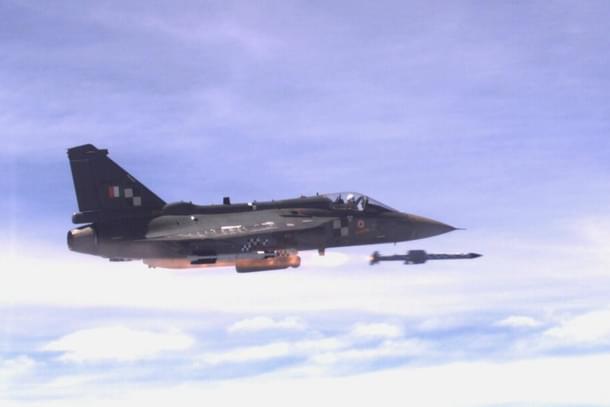Defence
Watch: Tejas Successfully Fires Made-In-India Astra Beyond Visual Range Missile
Ujjwal Shrotryia
Aug 23, 2023, 06:15 PM | Updated 06:24 PM IST
Save & read from anywhere!
Bookmark stories for easy access on any device or the Swarajya app.


Today (23 August), the Indian Air Force successfully conducted the maiden firing of the indigenously developed Astra Beyond Visual Range Air-to-Air (BVRAAM) missile from a Tejas aircraft.
The Defence Research and Development Organisation (DRDO) released a six second video of the Tejas LSP aircraft launching the missile.
#DRDOUpdates | Achieving major milestone towards #atmanirbharbharat ASTRA-Beyond Visual Range (BVR) Missile in its maiden flight trial was successfully fired from LCA Tejas off the coast of Goa.@DefenceMinIndia@SpokespersonMoD https://t.co/UF4p5GVfeI pic.twitter.com/dqoIWY0LTf
— DRDO (@DRDO_India) August 23, 2023
The test was conducted off the coast of Goa using a limited series production aircraft (LSP-7) of Tejas.
The DRDO developed missile is believed to have a range of over 100 kilometre. The Defence Ministry has already ordered 248 Astra Mk-1 missiles — 200 for the Indian Air Force and 48 for the Indian Navy.
DRDO is also working on developing a new, longer-range variant of the missile, called Astra Mk-2.
This missile was first unveiled in a promo video put out by the IAF ahead of the 90th Air Force Day in October last year.
Reports say Astra Mark-II will have improved jammer resistance and an indigenous seeker. The missile could be equipped with a dual-pulse rocket motor to improve the range and performance.
India is also working on another even longer-range variant called, Astra Mk-III, which will have a range of over 300 km. The missile will have solid fuel-based ducted ramjet (SFDR) propulsion.
Over the last few years, the DRDO has conducted multiple tests of SFDR technology critical for long-range air-to-air missiles.
The development of SFDR technology will enable India to make its own long-range air-to-air missile, which could mirror the capabilities of the best missiles in this class, like MBDA's Meteor, which the IAF uses on its Rafales.
Staff Writer at Swarajya. Writes on Indian Military and Defence.





